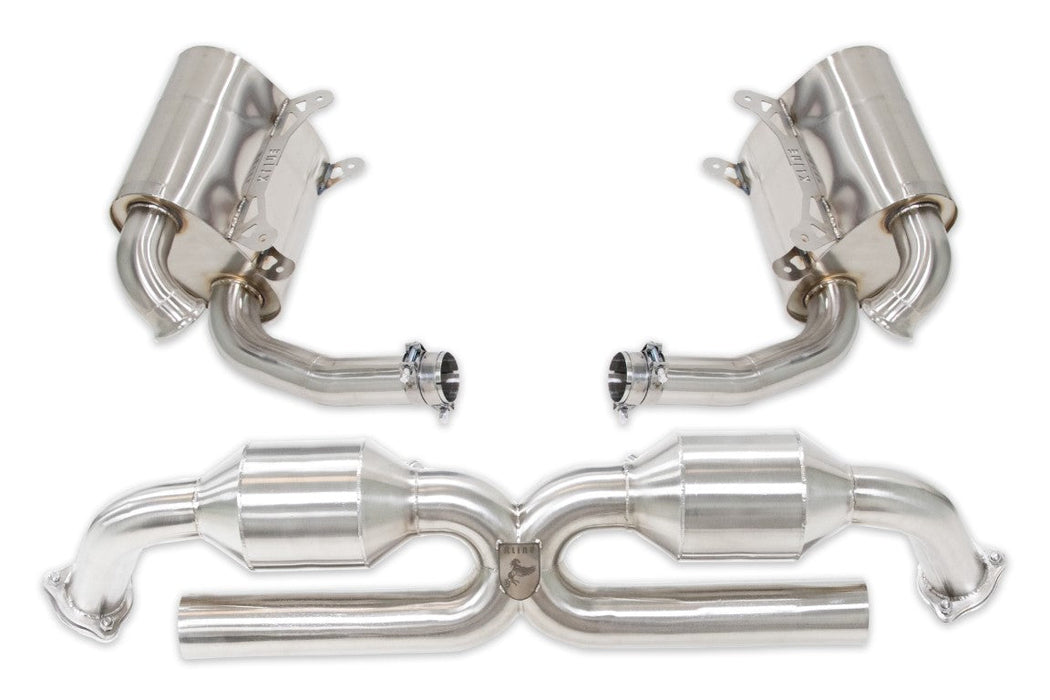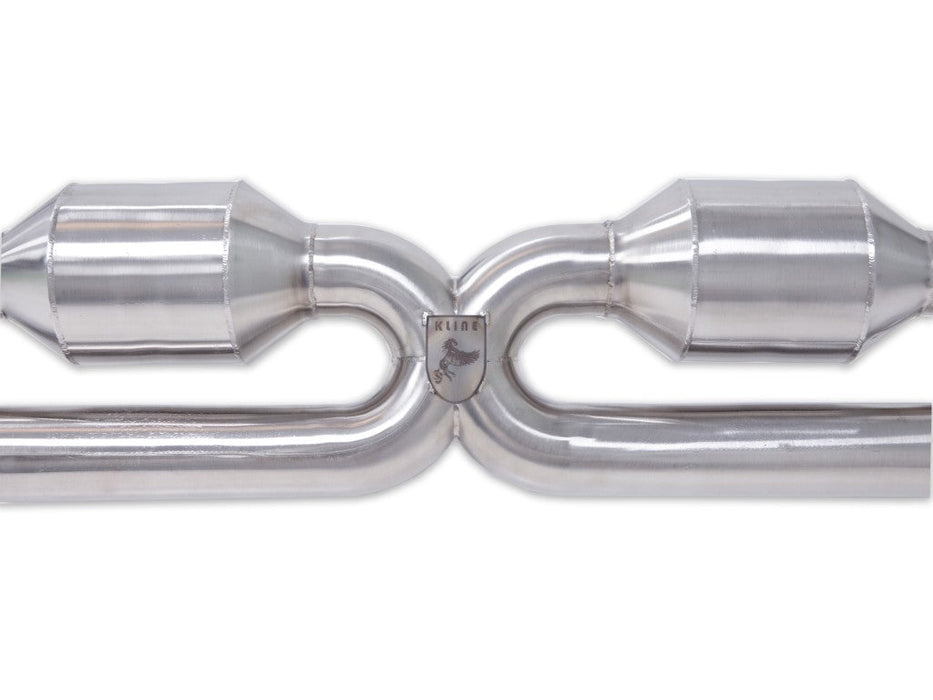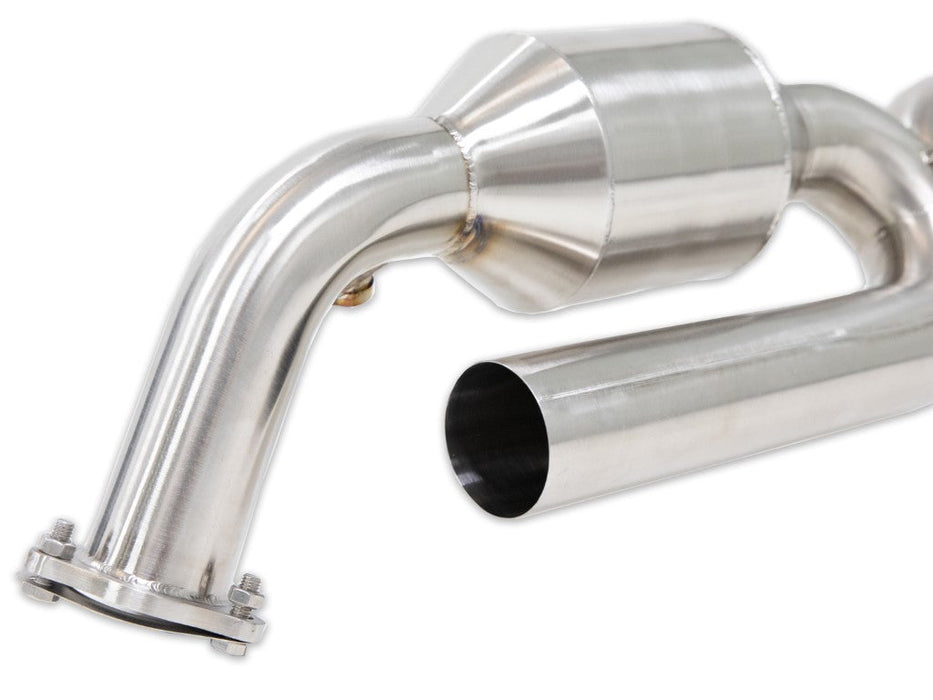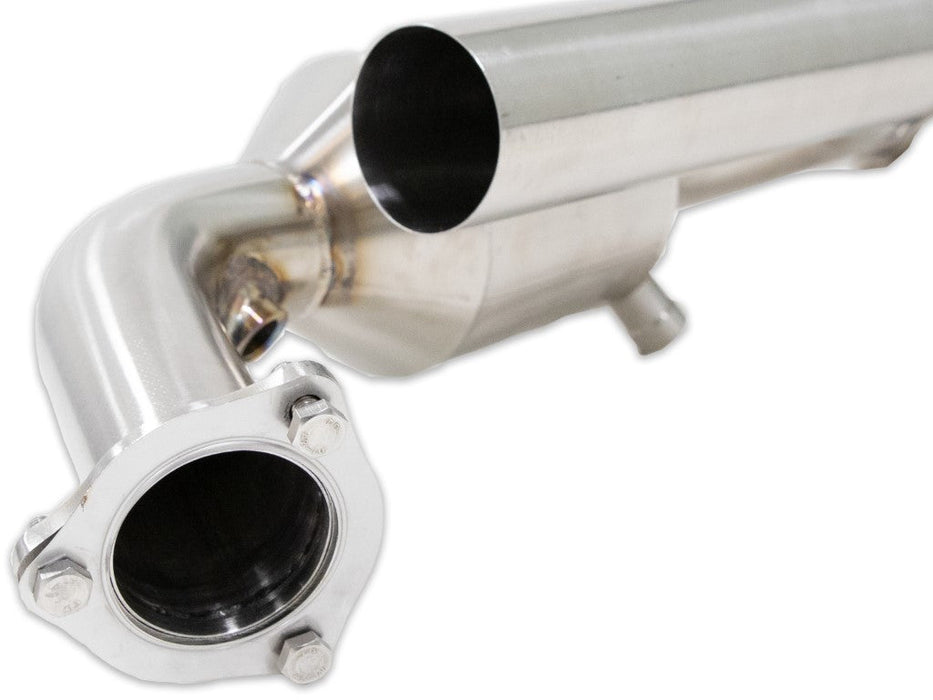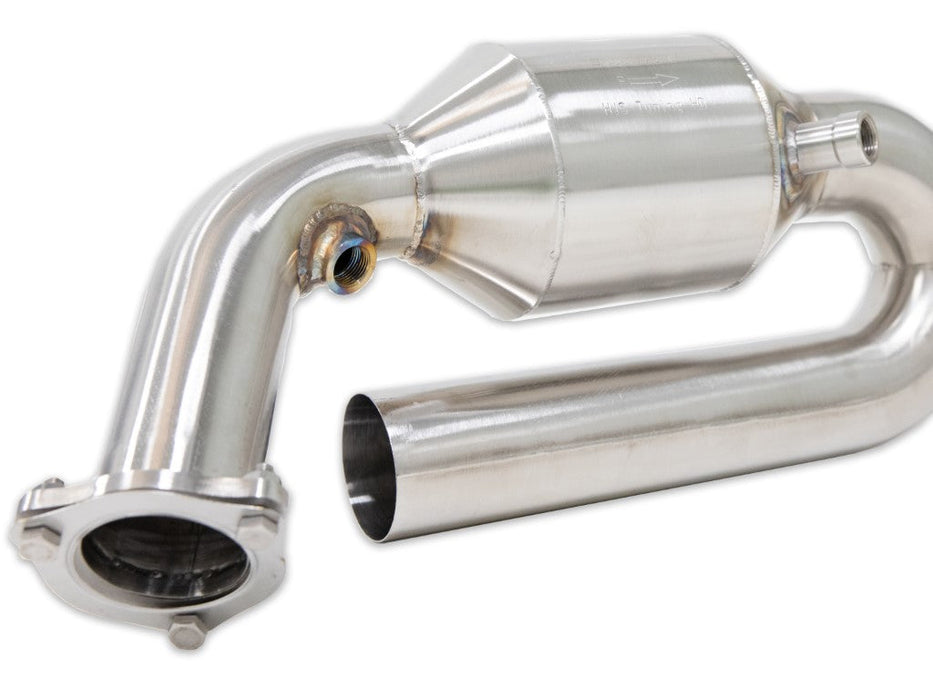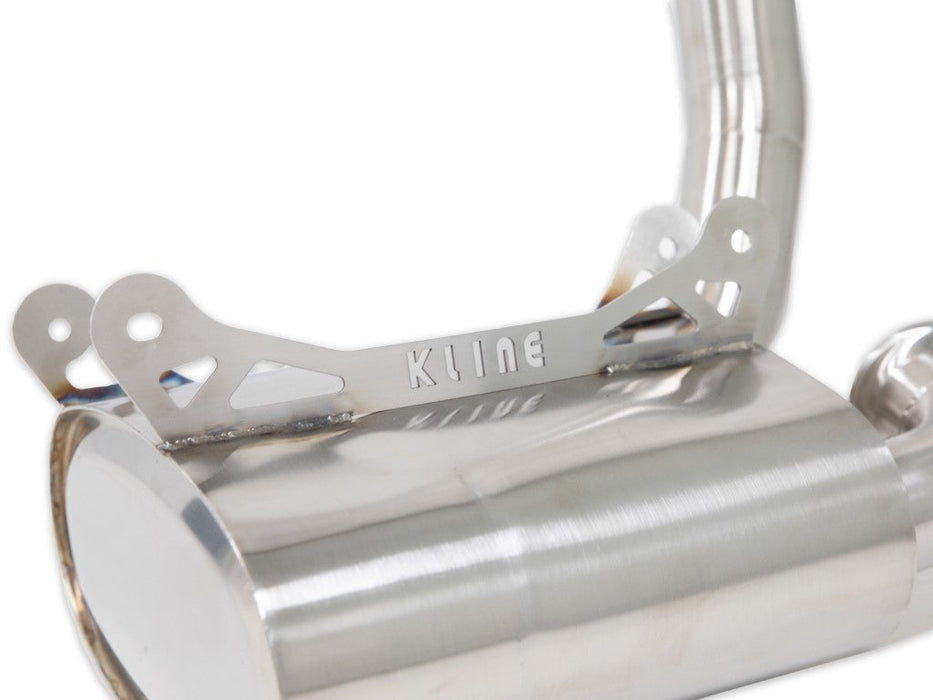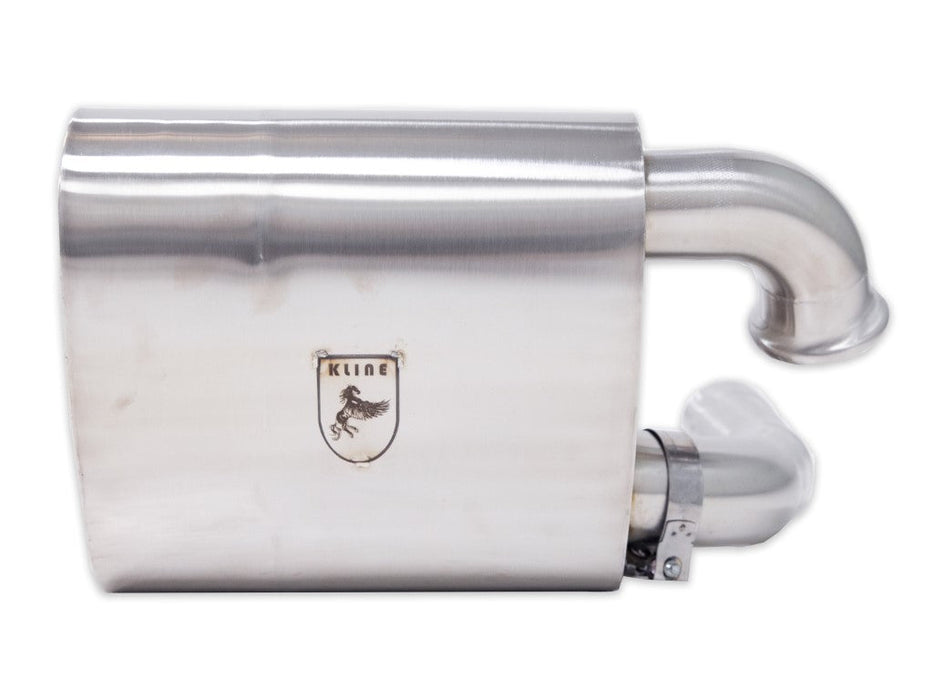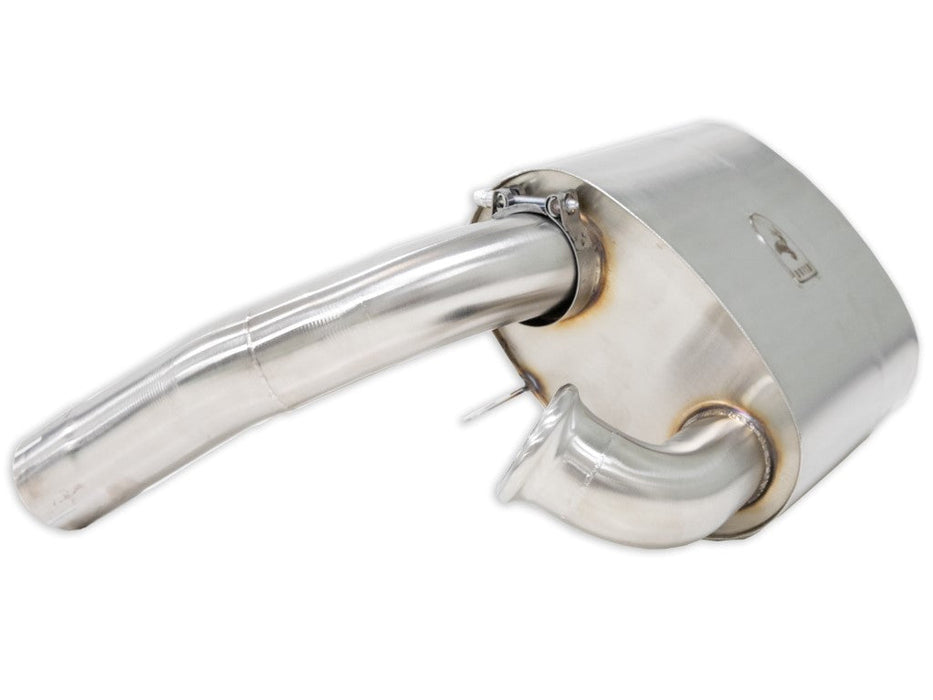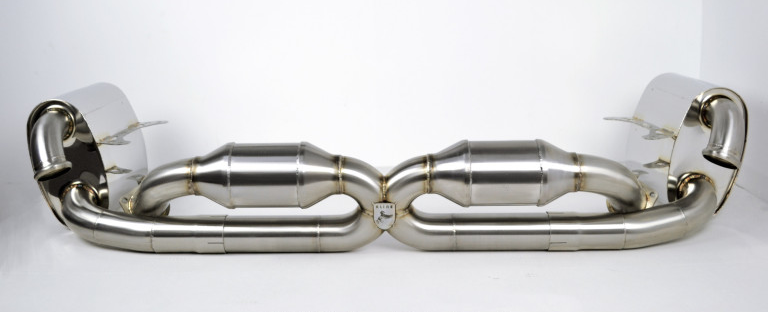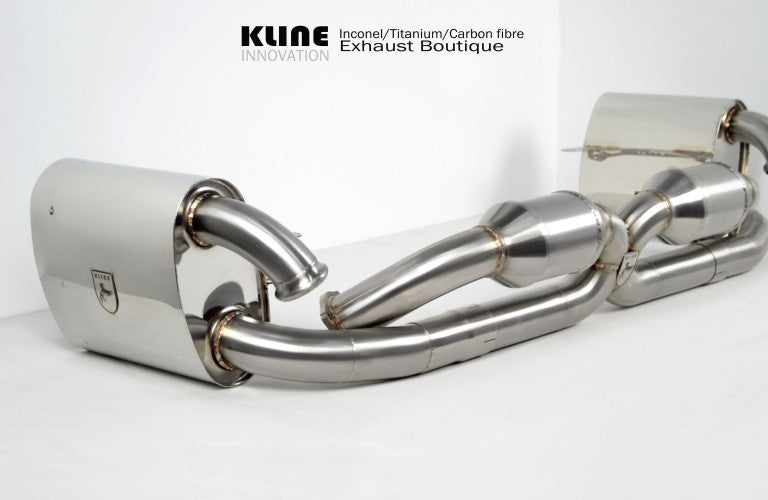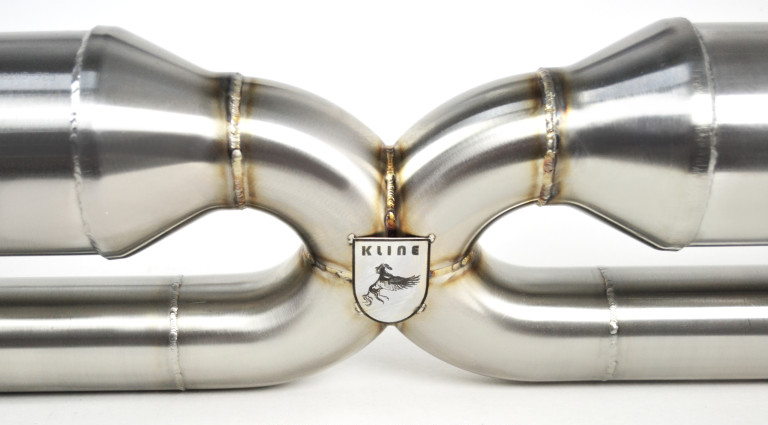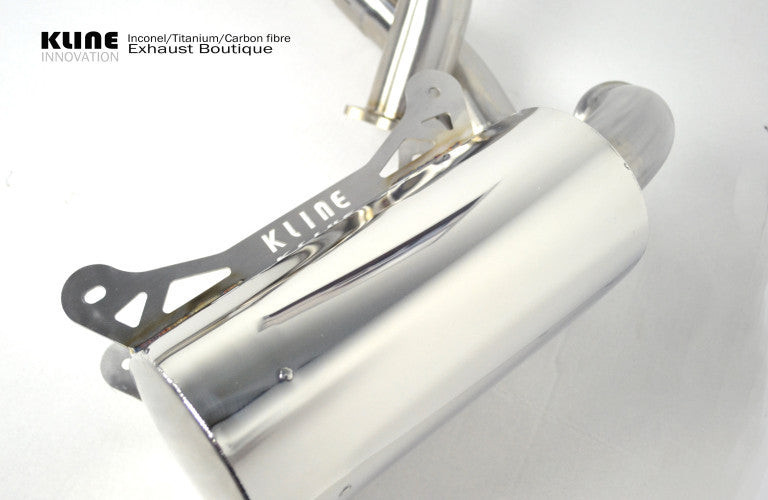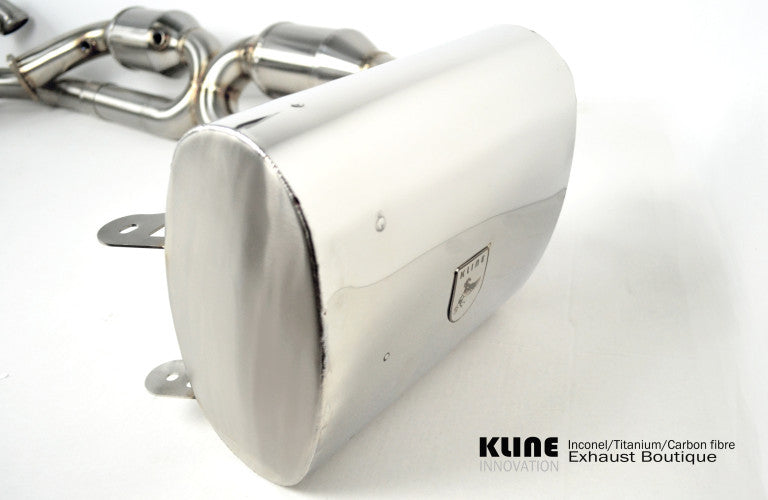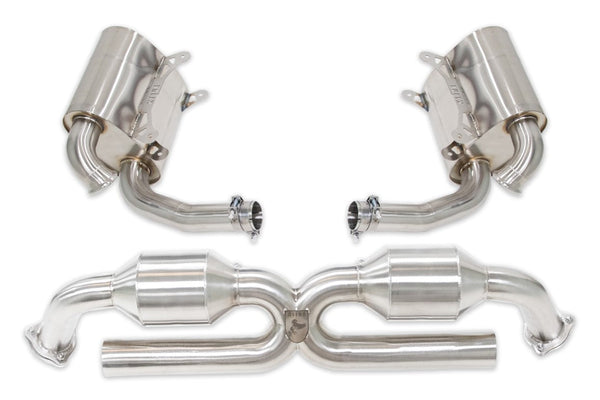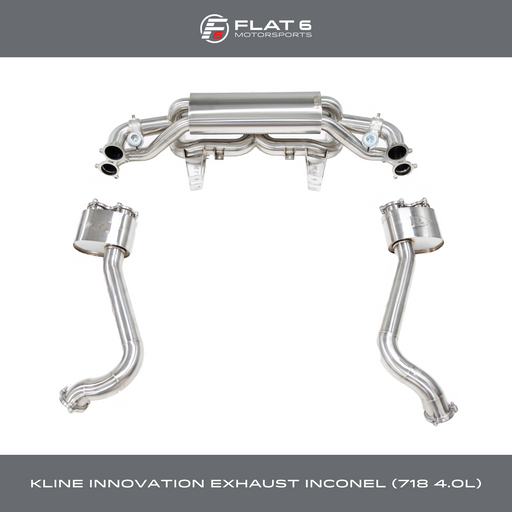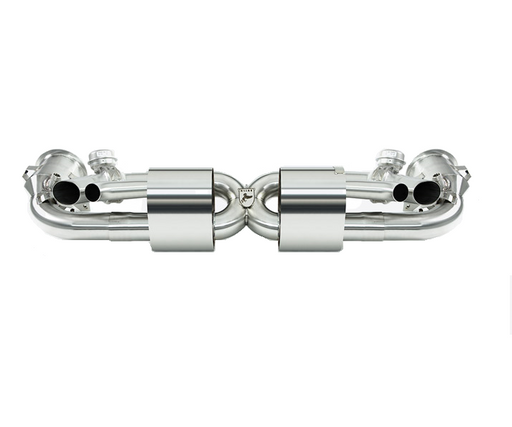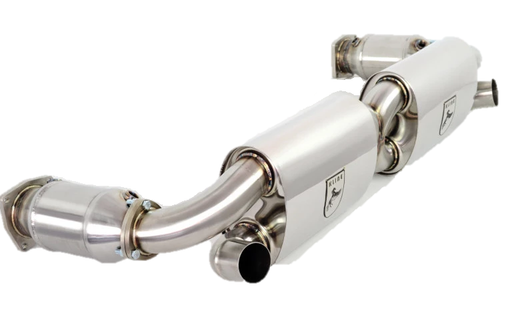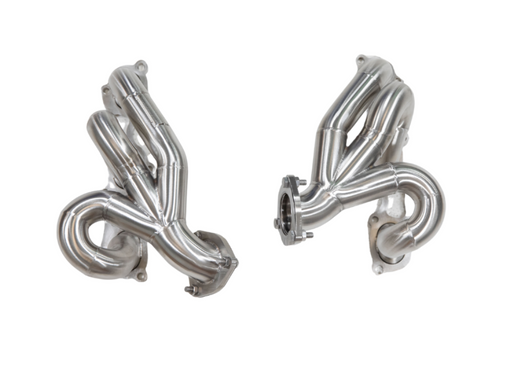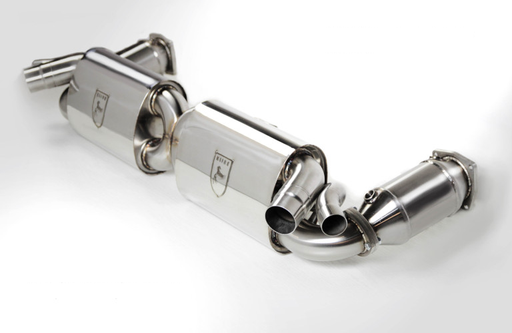Kline Innovation Exhaust System (996 GT3)
Designed to fit
- 2004 - 2005 Porsche 911 GT3
Product Details
Starting at the drawing board, the points of improvement over the OEM design and many existing sports exhausts were reviewed. Kline’s main objectives were to increase power, remodel and accentuate the sound, and reduce half the weight of the OEM system with this Porsche 996 GT3 exhaust.
The first point that stood out, was the catalyst design. 600 cell OEM cats, and absolutely no balance present in the factory exhaust. Replacing this GT3 exhaust system for a 200 cell sports catalyst they were able to achieve some moderate power and torque gains. The second design alteration was to remodel the way in which the exhaust gases interact from opposing banks. Replacing the two piece design for a single piece with their trademark tight radius, laminar flow X pipe, they were able to alter the exhaust pitch, and smooth out the imbalance. This resulted in a far higher revving race car-like sound. This was a Porsche 996 GT3 exhaust system design innovated and pioneered by Kline.
The factory silencers, heavy, cumbersome, and restrictively chambered, produce a tinny note to the exhaust. Kline needed to enrich the sound, as well as improve gas transit, and simultaneously reduce weight. Weight reduction and sound enrichment proved to be fairly straightforward with the simplification of the silencer design and removal of the multiple chambers. The addition of a single chamber volumetrically tuned towards low rev resonance, removed bass noise at cruising speeds, while a rich raucous vocal is achieved at hard throttle above 4000rpm. Purchase this Porsche 996 GT3 exhaust online.
Specs
Cross Section
- Cross sections in pre catalyst; 57mm OD chosen specifically to keep lambda ranges in A/F stoichiometry.
- Post catalyst cross section; 63mm OD into 1D CLR tight radius X pipe.
- Silencer sections; 63mm OD pre silencer, 57mm OD post silencer, single chamber with acoustic fill section.
Materials
Standard 304 grade Stainless Steel
Weight
- silencers 6kg each
- cat section 6.1kg
- total 18.1kg
Inconel 625, formula one grade exhaust material
Weight
- silencers 3.8kg each
- cats 3.5kg
- total 11.1kg
BUILD TIME
304 STAINLESS
- Cat section - 6 hours
- Silencer section - 8 hours
- Total - 14 hours
INCONEL 625
- Cat section - 8 hours
- Silencer section - 12 hours
- Total - 20 hours
About Kline Innovation

Kline Innovation is a Bucharest, Romania based exotic exhaust manufacturer who utilizes exotic materials to innovate high-end systems for Porsche, Ferrari, Lamborghini, Aston Martin, Audi, Bentley and McLaren. At Kline they take exhaust design very seriously. Consumers demand a no compromise product, and they take a no compromise approach to design and manufacture.
MATERIALS
At Kline Innovation they believe in the absolute best materials for every application, chosen scientifically by the materials natural properties. Titanium/Inconel/Carbon fiber exhaust boutique, they also offer 304 stainless steel as an alternative on their complete range. Every material has its own unique properties, and perfect application based on weight, strength, heat resistance, and chemical stability. Kline strives to craft some of the world’s best lightweight exhausts utilizing every innovation possible!
The following is a brief overview and explanation of the different materials they use, properties, and functions.
INCONEL
Inconel 625 is used in the aerospace industry where extremely durable and heat withstanding components are required. As an example, Inconel is used for the exhaust turbine blades in high performance jet engines. Inconel is used for the manufacture of formula one exhausts, and has also been used by some manufacturers on hypercar projects such as the Mcalren P1, Aston Martin 177, where lightness is a factor, and exhaust temperatures regularly exceed 1800 degrees fahrenheit.
The basic properties of Inconel are characterized by extremely high tensile strength, and extreme thermos-chemical stability. Due to the high tensile strength of Inconel (roughly the same strength to weight ratio as titanium), very thin sidewall material can be used, while still maintaining structural integrity, resulting in very light weight components that will not fatigue over time. The main drawbacks to using Inconel, is that it’s extremely difficult to machine and weld, and requires a high degree of skill and involves a time consuming processes. It’s also extremely expensive as a raw material.
TITANIUM
Titanium in its varying grades is commonly used in a variety of applications where strength to weight ratio is paramount. Very high tensile strength and low density mean that very light and strong components can be manufactured easily. Titanium is also relatively easy to machine and weld using standard engineering approaches. The main disadvantages to titanium, is the cost of material, and prolonged heat exposure exceeding 1100 degrees fahrenheit causes oxidation of the material, resulting in brittle components and potential breakages. For this reason titanium is best suited to cooler applications where strength and lightness is a factor.
STAINLESS 304
Stainless steel 304 grade has become the industry standard for exhaust manufacturing. It’s moderate strength, thermos-chemical stability, inexpensive, and easy to manufacture. 304 stainless can be used to build relatively inexpensive exhausts to a high standard of functionality and durability. The main drawback to stainless steel is the weight. Roughly the same density of steel, but reduced tensile strength, building high performance exhaust components from stainless can be limited. Also from the perspective of sound, the thick sidewall required from stainless, can produce a slightly dull lackluster sounding exhaust note when compared to the previously mentioned materials!
CARBON FIBER
Carbon fiber reinforced polymer has an extremely high tensile strength to weight ratio, surpassing that of all metals. Extremely light weight components can be molded to almost any shape. The main drawback to carbon fiber being, the material cost, the fatigue endurance limit is hard to define (the material can break unexpectedly), and the lack of prolonged heat resistance due to the polymer binding agent.

